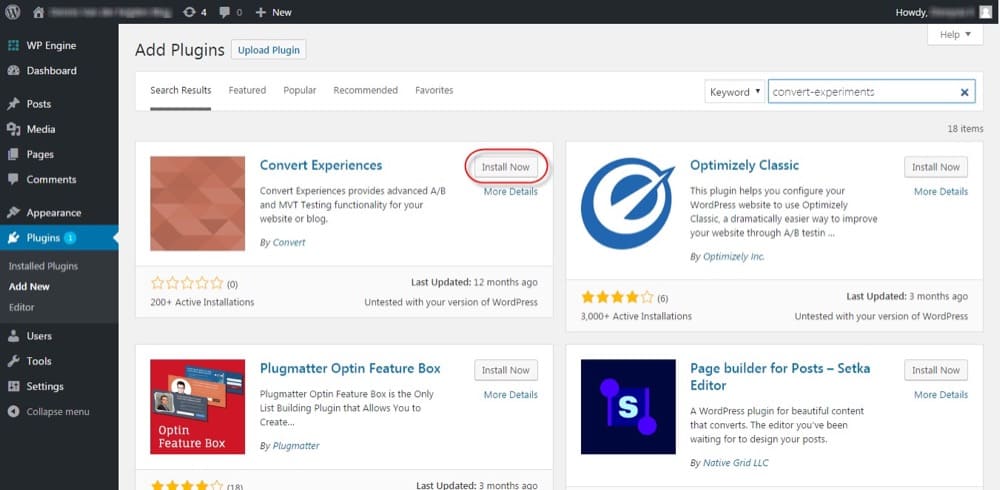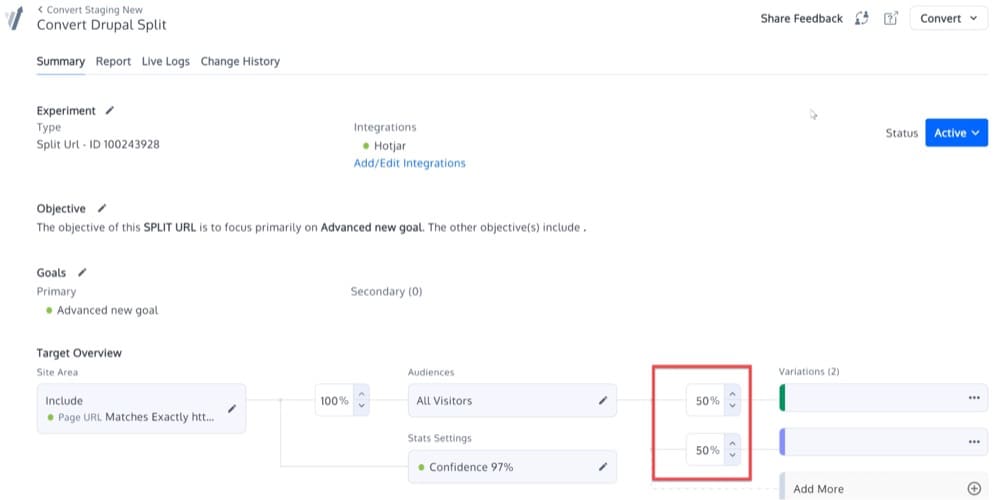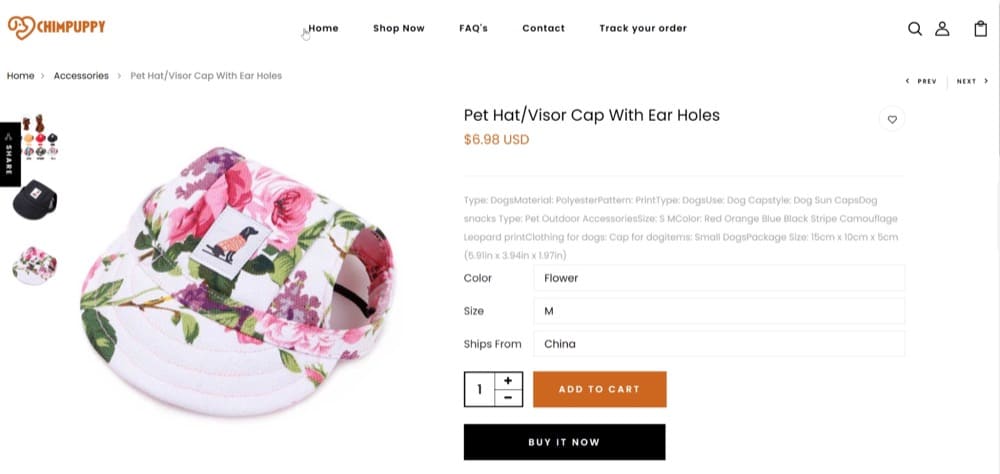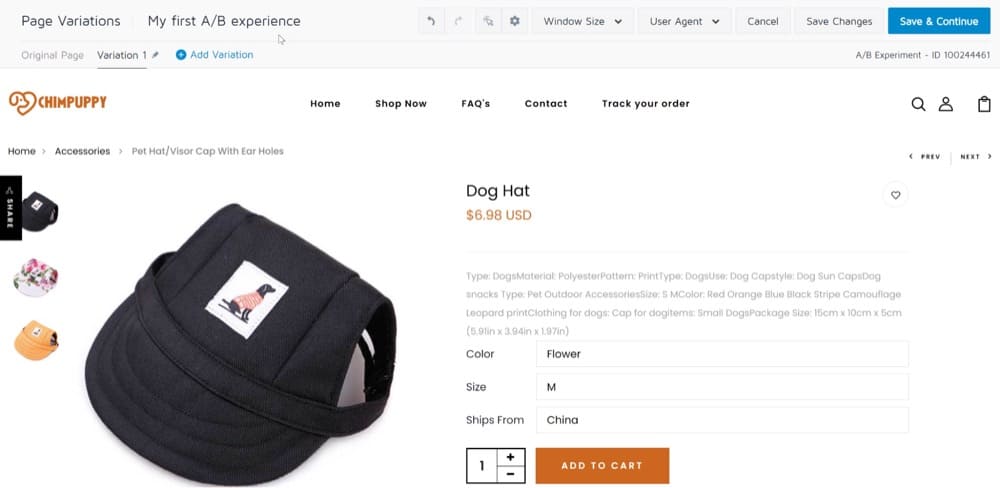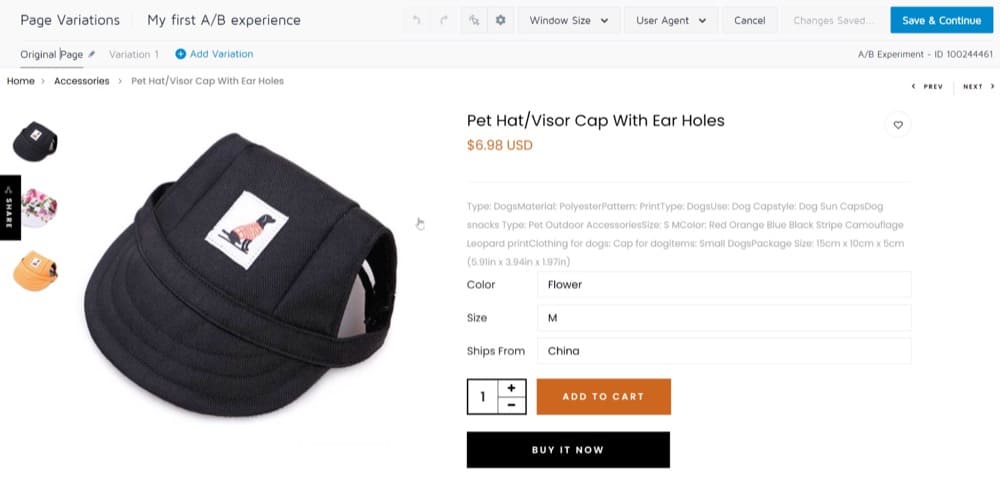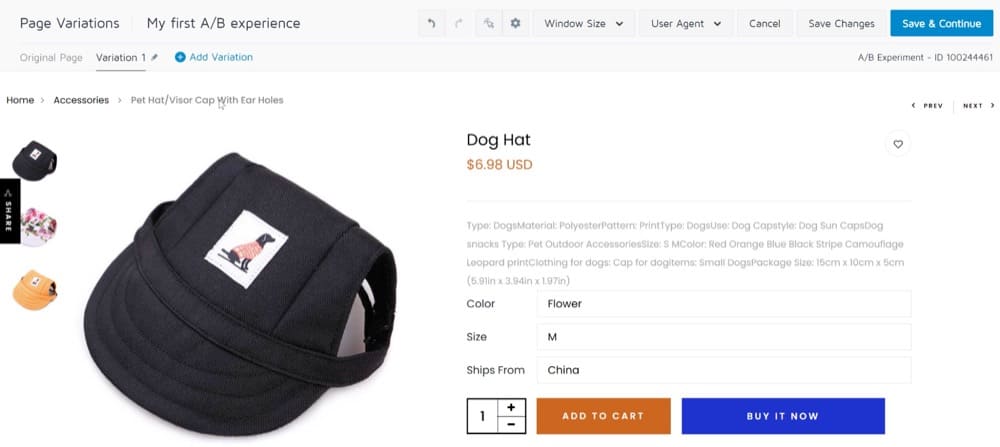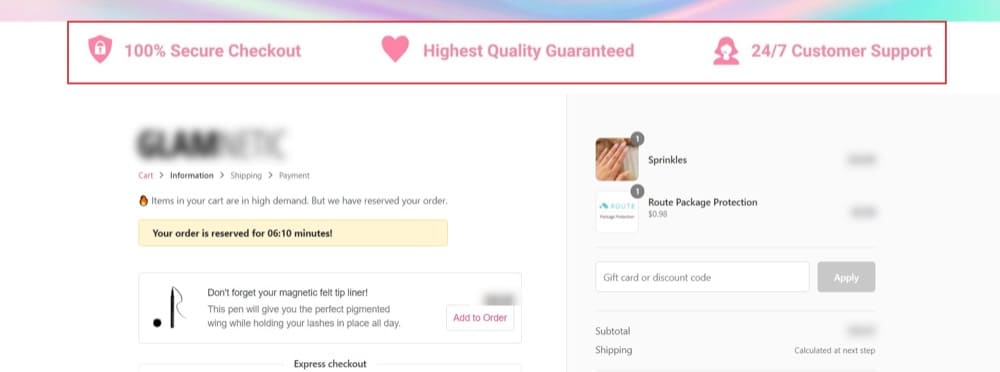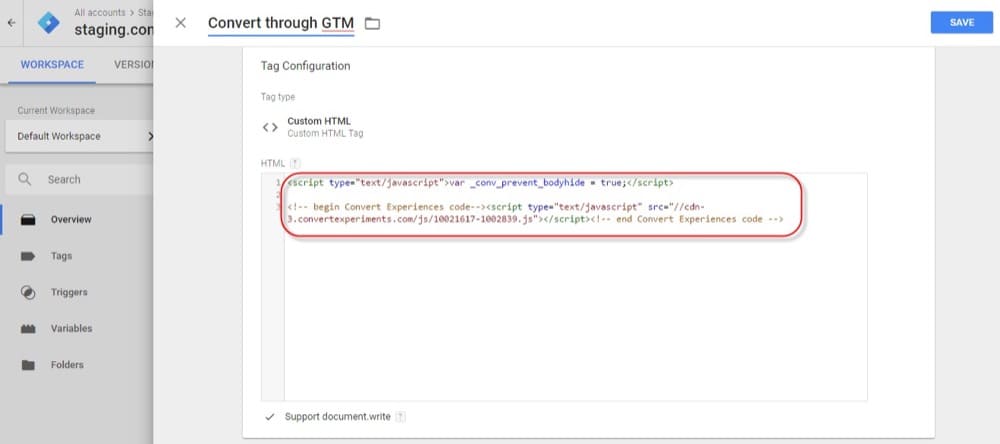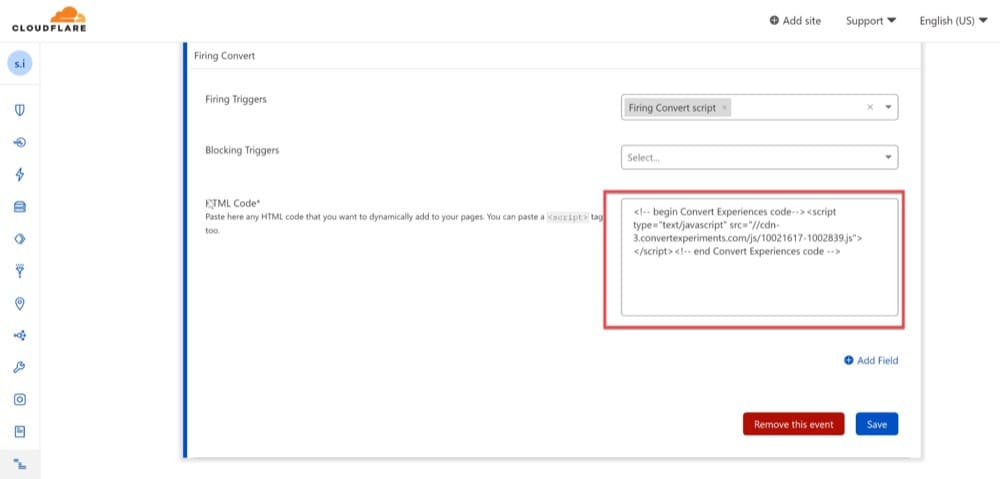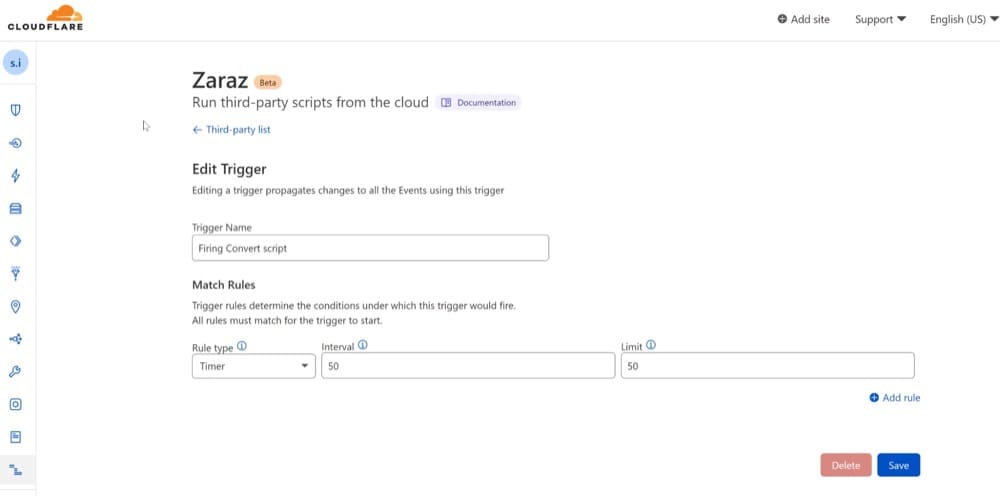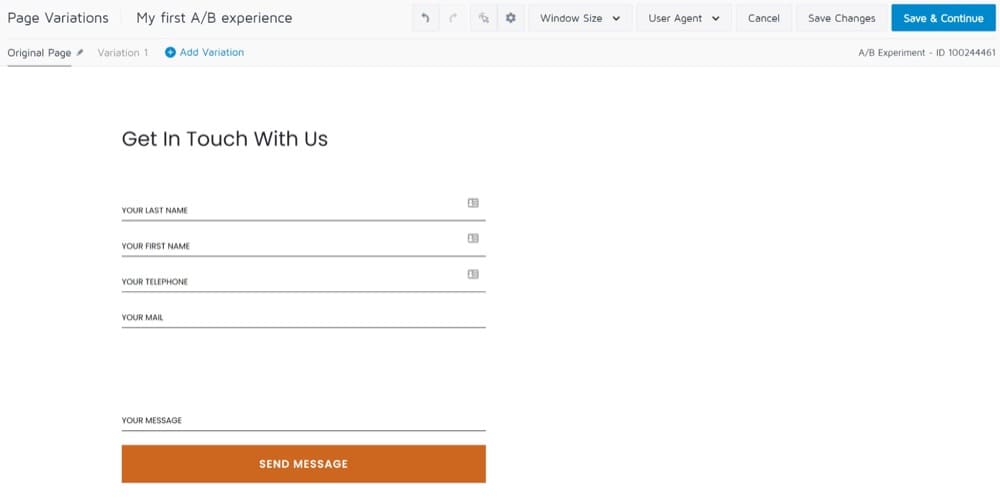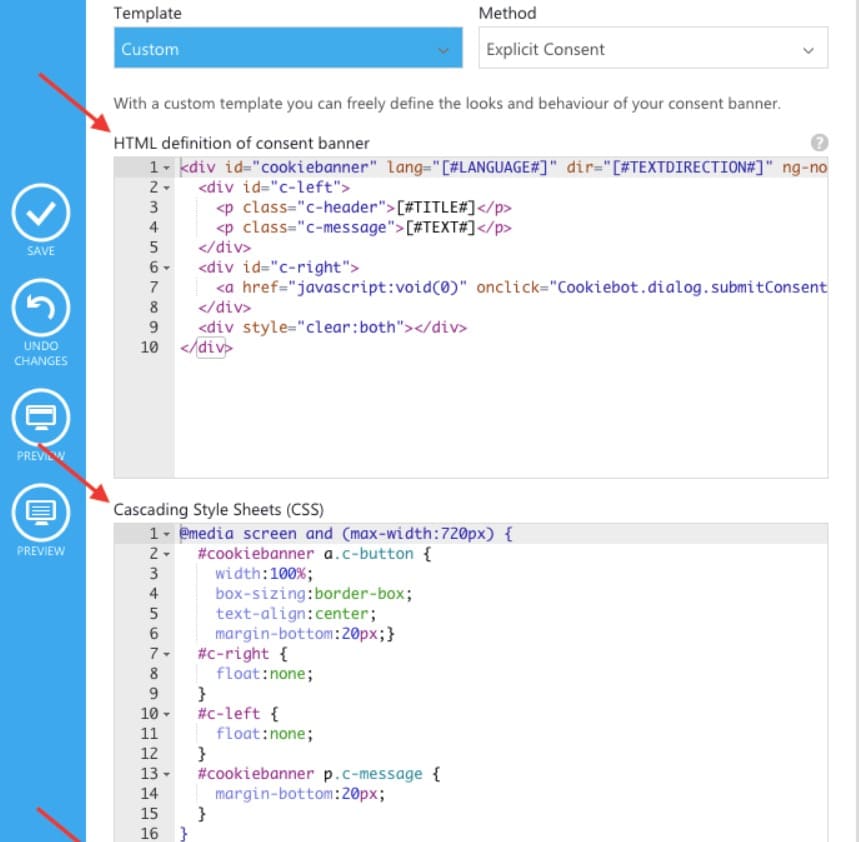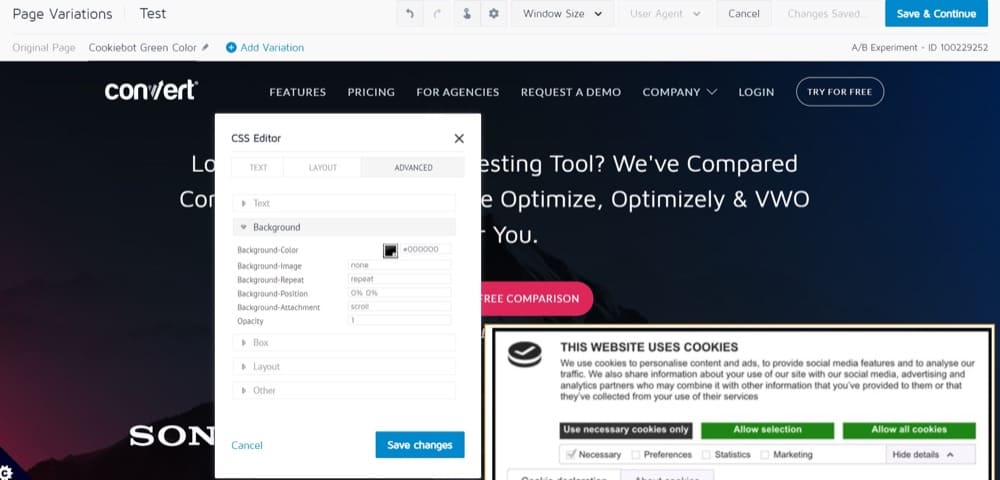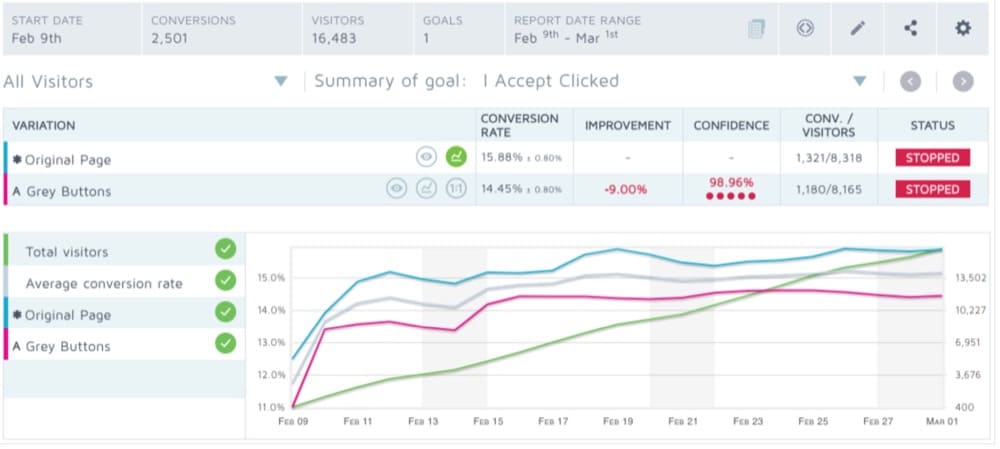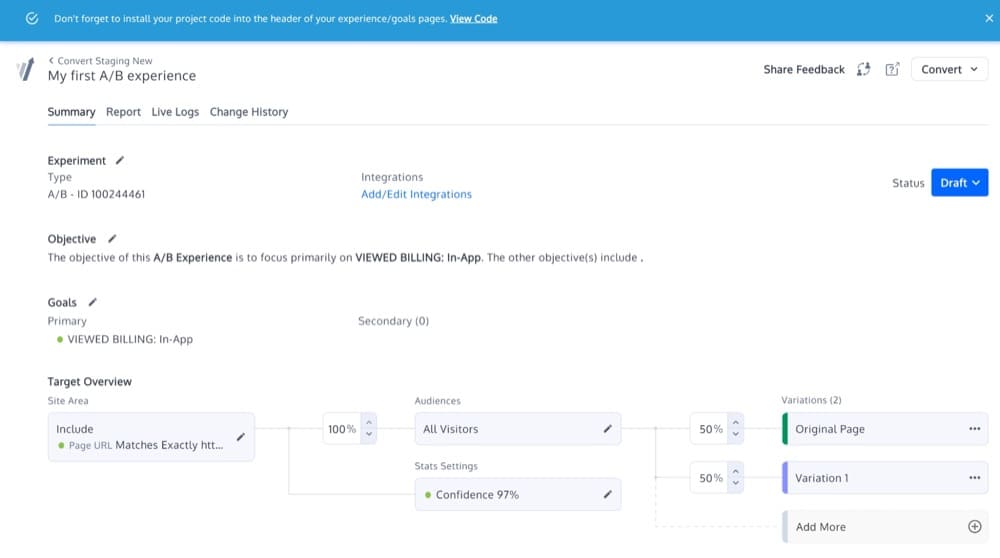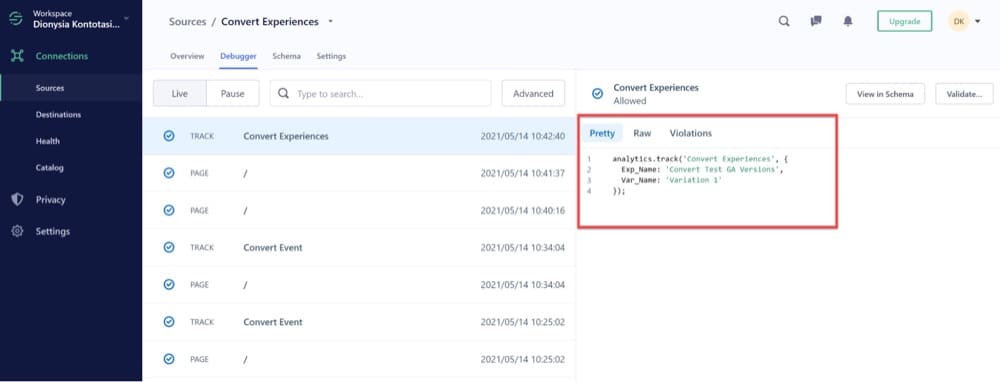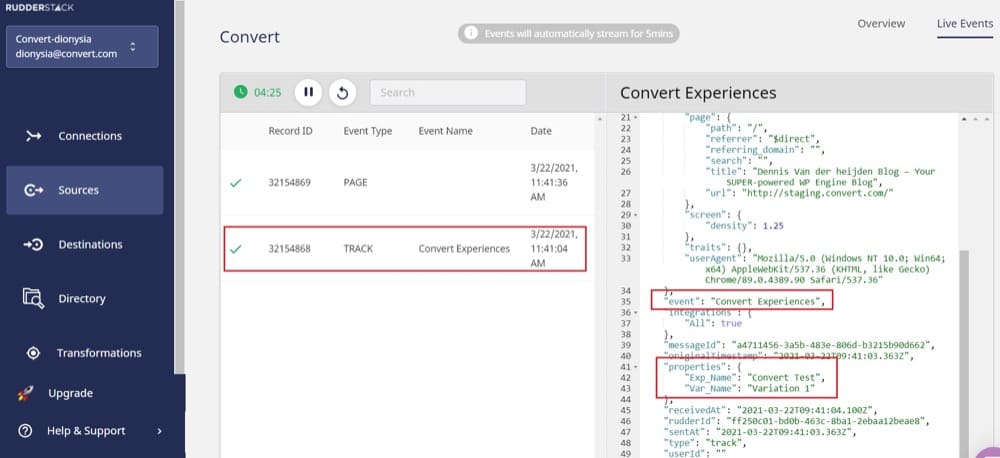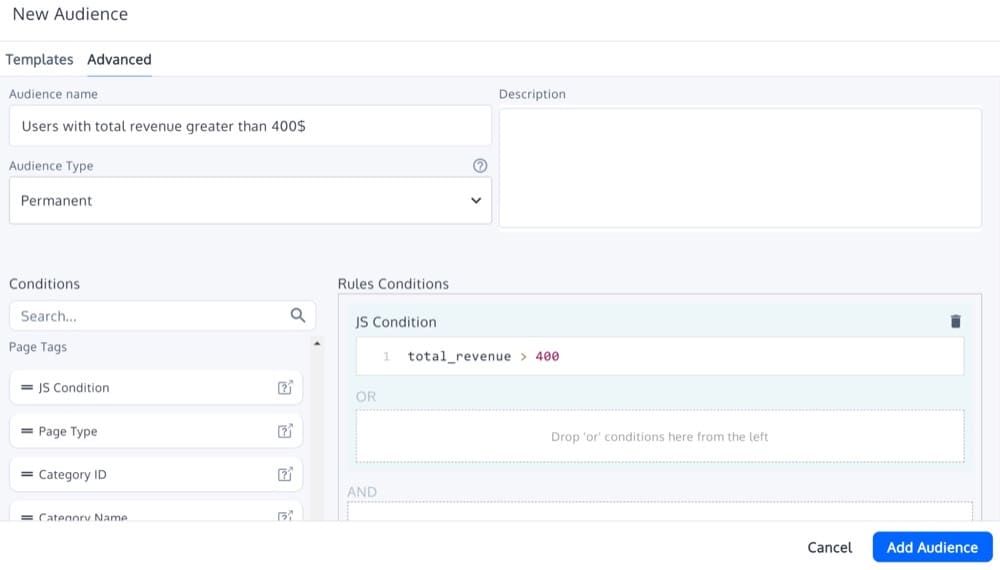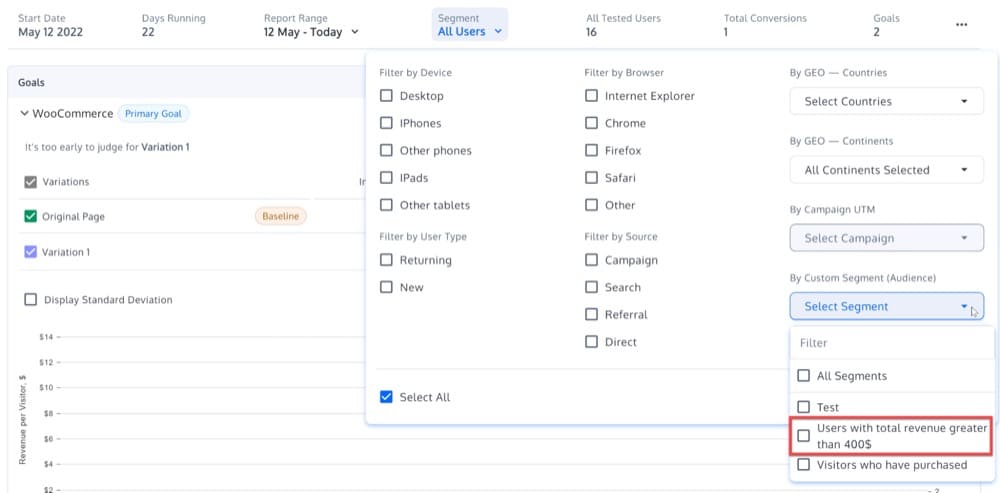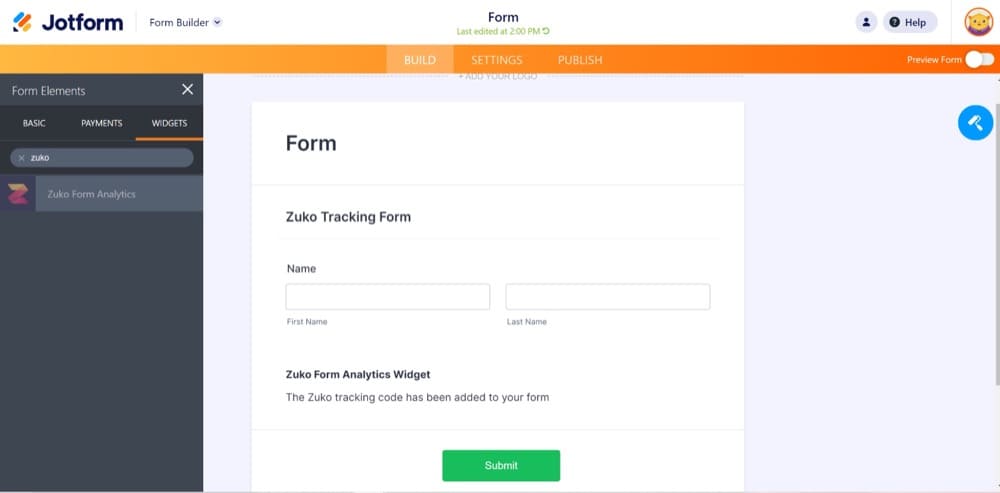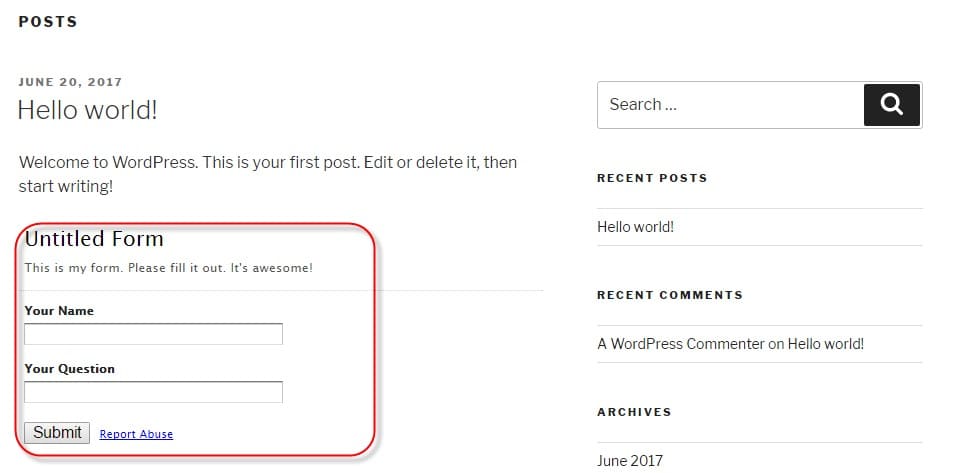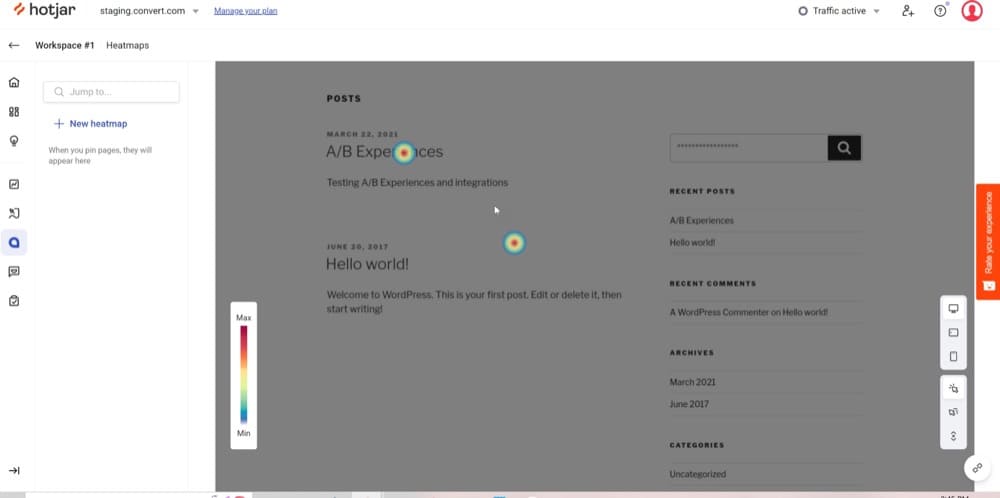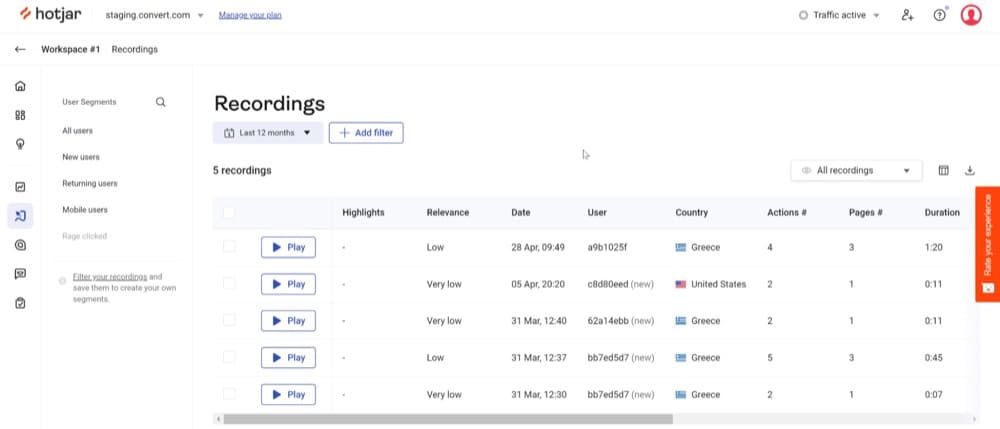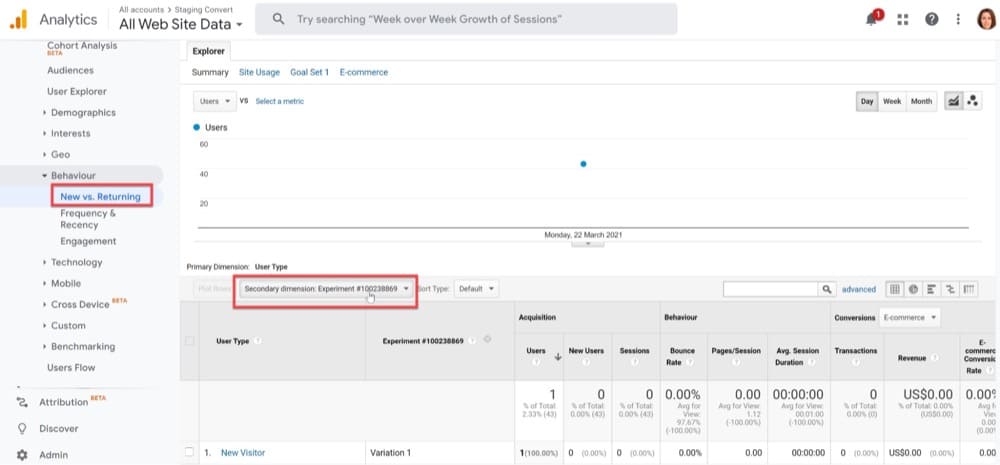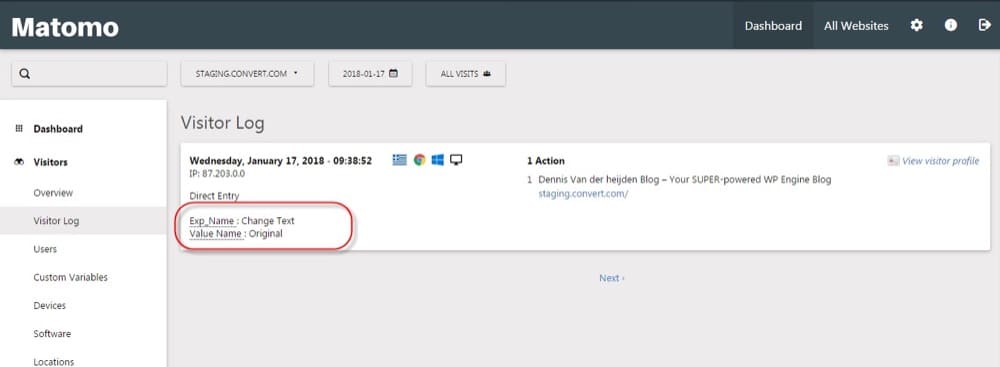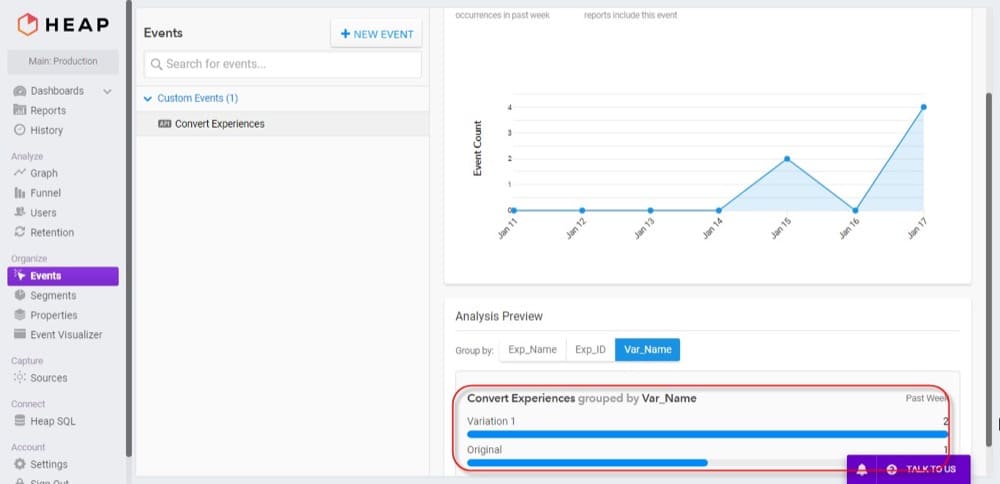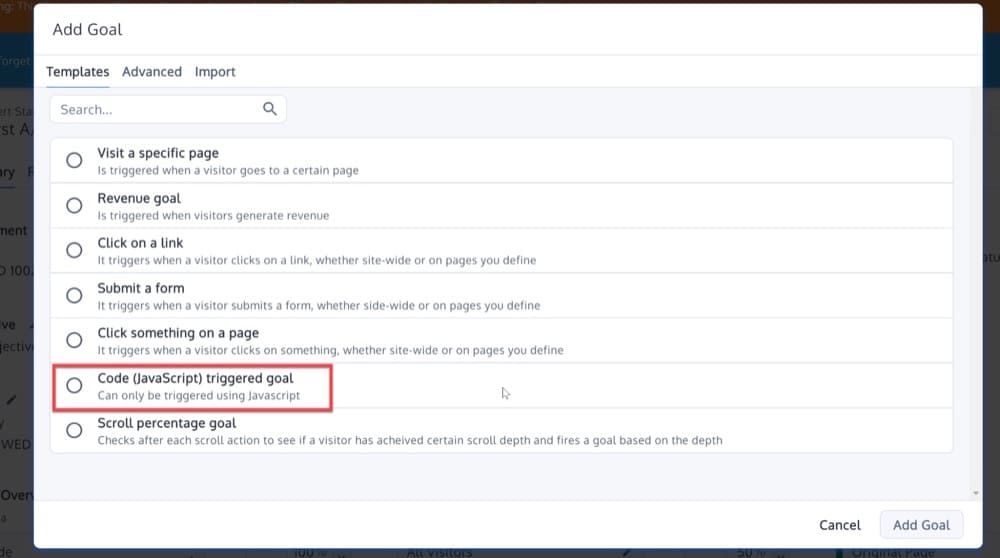Integrations A/B Testing: How to Ace Experimentation Using Integrations
First, allow me to introduce myself. My name is Dionysia, and I work for Convert’s Customer Success team and Integrations team. Helping our users get started with Convert and ensuring they get the best customer experience from our fantastic features is a huge part of what I do. I understand the frustration of disconnected platforms, and the apprehension toward new technology, and I am here to assist you.
When you integrate Convert (or any other A/B testing tool) with a third-party tool, you can push your A/B experience data into that tool. Using integrations, you can target experiences using the data made available by these technologies on the website. For example, you can use demographic data from data management platforms, to run specific variations. This allows you to keep a close eye on your tests, obtain a better understanding of your business, and improve targeting.
There are a wide variety of tools available when integrating your A/B testing platform, so it can be difficult to choose the right ones. To help you make an informed decision, I have compiled a list of well-known and lesser-known integration tools in this article.
In this article, I’ll explain how integrations enhance your test results, and I’ll walk you through the integrations available to you with Convert Experiences.
You can also try them for free when you sign up for a trial!
Identify Your Integration Needs
Two factors will most likely influence your A/B testing integration needs:
- Your CRO goals
- The day-to-day operational needs of your team.
When it comes to CRO, your objectives almost always translate into software requirements.
It is extremely challenging to try to improve organic traffic without an SEO tool, just as it is difficult to boost conversions without an analytics tool, or build an email workflow without an email automation solution.
You’ll need to figure out your CRO objectives and check to see if you have the necessary tools.
If you’re not sure, make a note next to the objective, so you can be sure you’re only buying the software you need. This will not only save you money, but it will also avoid the confusion of juggling multiple dashboards and interfaces.
Digging through your present stack can take several minutes or hours, depending on the size of your organization. (Larger companies are more likely to have a martech stack that’s been built up over time.)
It’s possible that several tools in your stack will no longer be in use, so it may be worth going back to re-evaluate them.
At Convert, we keep a list of our technology tools, as well as who has access to them. This way, we’re always up to date on which tools we’re using and which ones we no longer need to pay for.
Apart from your CRO objectives, it’s important to add your team’s requirements to the list.
This is a critical step that often slips managers’ minds, causing them to purchase software that reflects their personal preferences, and not those of the company.
Another mistake managers should avoid is choosing their own martech stack, as this can be a huge disservice to teammates.
Your marketing colleagues are likely to be well-versed in the martech ecosystem, and it’s important to find out the needs of your team, as a whole.
Figure Out Which Teams Will Be Using the A/B Testing Integrations
As a next step, identify who will be working with the tools being used to integrate your A/B testing platform.
Several different teams across the organization will use this stack, either directly or indirectly.
Here are a few examples of these teams, and how they might use the stack:
- Customer Acquisition Teams – Managing and executing digital marketing, affiliate & partner marketing, events, app & website optimization, and much more.
- Brand Marketing & Communication Teams — Managing the brand’s presence and marketing strategy on social media.
- Marketing Operations (also known as Marketing Ops) — Managing and monitoring marketing campaign performance, gaining insights from customer data, and assisting the marketing team in making the best strategic and execution decisions.
- Sales – Leveraging data from the stack to better understand prospects’ and customers’ needs, interests, behaviors, the offers they respond to, the communication channels they prefer, their previous purchase history, and more (for both B2C and B2B marketing).
- Customer Service – Improving customer loyalty, implementing churn-reduction strategies, and promoting new products and services to customers (based on previous behaviors and interactions).
- Product Marketing – Managing and implementing content marketing tactics that educate prospective buyers on the usefulness and value of their products, as well as using technology to track and manage coverage/sentiment linked to their product offerings among the press, analysts, and other influencers.
Build an A/B Integration Roadmap
Next, you’ll need an A/B integration roadmap.
Here’s how to create one:
- Decide if you want to build your integration stack around an A/B testing platform or assemble your own. The single platform method requires less maintenance, yet the a la carte approach allows for more flexibility.
- Next, put together a team to manage your A/B integration stack. This group will be able to identify useful integrations and assist in their implementation.
- Establish a timeframe for implementing these integrations and use your project management tool to measure progress. This strategy can be visualized with a chart, which can then be used to convey updates to stakeholders.
- Remember to collect feedback, evaluate the efficacy, and make modifications as needed and as new integrations are added.
Ask the Right Questions Before You Integrate
Begin by asking some basic questions about integrating your A/B testing platform with other tools. For example:
- What tools can help you document, unify, disseminate, and automate your experimentation processes?
- How will these tools help you hold your experimentation platform accountable for tracking and reporting program success?
- How do they assist you in cooperating with the rest of the organization?
- In terms of usability, productivity, training, and customer service, how do they assist your team?
- How do they fit into and interact with your current technology stack?
- Is the software based on a well-known and well-integrated codebase? Is there a large ecosystem of professionals, including both individual programmers and consulting firms?
- What is your implementation and integration budget?
- What are the steps for setting up the integrations?
- Will you need to hire developers?
Organize Integrations into Buckets
Once you understand your business objectives and have come up with a strategy to achieve them, the next stage is to determine which systems must be integrated with your A/B testing platform. Perhaps, a CRM or a CMS?
To make things easier, we’ve divided integrations into several broad (and occasionally overlapping) categories.
Content Management Systems (CMSs)
If you’re creating a website for your company, you might think about using a content management system (CMS).
A CMS allows you to develop, maintain, and modify a website without having to code it from scratch.
This is great news for those of us who aren’t web developers, designers, or extremely tech-savvy.
The design of a website has a significant impact on the user experience and conversion rate.
All of the page elements must work together to achieve the desired results, whether it’s generating revenue or gaining new subscribers.
It might be difficult to determine which changes will give you the best results when modifying the website design to improve conversion rates. You can risk lowering the conversion rate if you make the wrong change.
One of the most appealing aspects of a CMS is the possibility for third-party developers to create plug-ins that extend the functionality of the platform.
Now, in a matter of clicks, you can use plug-ins, features and functionalities that would have once taken weeks or even months to design!
A/B testing plug-ins are useful in this situation, allowing you to compare a new element to an existing web design, to determine which one converts best.
You’ll be able to do the following with A/B testing on your CMS site:
- Identify the most effective marketing methods for your product and company
- Ensure that your visitors have a positive user experience
- Increase your conversion rate and sales
- Create a highly effective website
CMS elements that can be tested are listed below:
- Website pages and advanced menus
- Blogs
- Landing pages
- Forms
- Headlines
- Page content
- Graphics
- Call-to-action (CTA) buttons
Example: Test a New Landing Page
This is one of the simplest A/B experience you can run on your CMS!
Here’s another example below, this time in Drupal.
To test a new landing page, first set the landing page up in Drupal, then set up a Split URL Experience.
When you make this experience active, Convert distributes your traffic between the original and new landing page. Visitors in the original group see the old page, while visitors in the variation group see the new landing page.
Check Convert’s integrations with popular CMS platforms WordPress, Umbraco, Wix, Squarespace, and Drupal.
eCommerce Platforms
eCommerce store managers can use A/B experiences to test and measure the impact of everything, from the color of “Buy Now” buttons to the layout of a site.
They can help you figure out which words, colors, prices, and other factors you want to test to compel customers to open, click, and buy more frequently.
Once you know which versions convert best, you can display these variations to two (or more) audiences.
Even the smallest changes can have a significant impact on conversion rates. Many online retailers are surprised to discover this.
The font or size of the text in a “Buy Now” button, for example, plays a huge role when persuading consumers to click.
Businesses who opt to implement A/B testing into their eCommerce platform reap numerous benefits, such as:
- Receiving useful information about customers and marketing
Customers nowadays have more options than ever before and are often impatient when it comes to unpleasant user experiences. A/B testing allows you to gather the data you need to better understand your customers’ preferences, so you can make empowered decisions for your website.
- Improved conversion rates
The primary benefit of A/B testing is that it allows you to improve your conversion rates and obtain better results from every site visit. You’re able to see, firsthand, which solution your customers prefer and quickly incorporate it across your site.
These go hand in hand with increased conversions. You’ll be able to see which options elicit positive and negative responses in your customers, so you can modify your site accordingly. Ideally, this means fewer customers will abandon your site.
Here are some specific examples:
Example #1: Improve the Visibility of Your Products
Make changes to your product’s name, short description, and featured image.
Create alternate Shopify Product Summaries for each product (with different names, descriptions, and images) without the help of designers and developers.
When you use a tool like Convert, you can determine which option results in more complete orders containing that product.
Example #2: Experiment with Your Call-to-Action Buttons
You can add products to a shopping basket, move on to the next stage of a checkout funnel, or complete a transaction.
Location, size, message, and color are all important factors to consider. Convert Experiences will evenly divide your visitors across all different test variations and tell you which variant boosts your eCommerce income.
Example #3: Boost Your Sales
Test all of your ideas to ensure that visitors have a great experience and don’t leave your site without making a purchase.
In order to create a sense of urgency to buy your products, you can do things like add trust/award badges, display guarantee and identifiable security seals, and reveal shipping fees on the product page.
Check Convert’s integrations with Shopify, Volusion, Magento, WooCommerce, BigCommerce, SAP Hybris and PrestaShop.
Try all of this and more when you sign up for a free trial with Convert!
Tag Management Systems
Tag Management Systems allows you to have complete control over third-party tools and services for your website. They also help improve its speed and security.
These systems allow you to use third-party tools like analytics tools, marketing automation tools, chatbots, A/B testing scripts, and much more.
Integrating your A/B testing platform with a Tag Management System is simple!
All you need to do is create an HTML tag that contains the A/B testing script.
You’ll need a trigger in order to fire the tag above.
You can have various triggers set up for each of your website’s page templates.
The triggers can also determine whether the user is on a mobile device or desktop.
This information can be acquired through a custom variable that checks a visitor’s user agent.
Check Convert’s integrations with Google Tag Manager, Tealium, Cloudflare Zaraz.
Landing Page Builders
Imagine you’ve completed the design of your landing page.
Now, all that’s left to do is go live, relax with a bottle of champagne, and watch the conversions roll in.
Oh, if it were only that simple!
No matter how much effort you put into building a conversion-optimized page, there’s only one way to figure out what actually works. You must test it against a slightly different version and see which one performs best.
This is what A/B testing is all about.
How would you know whether your call-to-action (CTA) button should be larger, for example? What if a better headline could persuade more people to convert? Would an on-page countdown timer increase or decrease your sign-up rate?
Using web design best practices will only get you so far with these questions. To learn the truth about what works, you must approach it as a scientist would: you must A/B test.
The main idea is to leverage all of the data sources available to you to figure out where your page can be improved.
For example, if your analytics show that 60% of visitors abandon the landing page sign-up form while filling it out, you might want to limit the number of fields.
Consent Management Platforms (CMPs)
When processing the personal data of visitors from EU/EE, A/B testing tools must comply with the GDPR and ePrivacy and respect the user’s choice regarding cookie tracking.
This means that the website owner needs to be able to control when a cookie-setting script is executed on the website.
Compliant use of cookie tracking can be achieved by first executing cookie setting scripts after the user has given consent.
Under GDPR and ePrivacy, you must notify your customers about what personal data you are processing through a privacy notice, and collect consent for processing this personal data.
You can collect consent by using one of the Cookie Consent Management Platforms (CMP) (Cookiebot, CookieConsent, Civic Cookie Control) for tracking the visitor by adding a “tracking consent” notice on your webpages.
This notification should contain a button that the visitor can click to give their consent.
CMPs (or Consent Management Platforms) are the tools that enable pop-up boxes to be displayed to users when they visit a website. A CMP will ask for your consent to both cookie insertion and collecting your data, before providing an indicator that executes tags based on your selection.
The appearance of your pop-up box, the wording of your message, and the details of your options are all subject to change, depending on how you customize and use your CMP.
Consent Rate Optimization can be used to increase your number of consenting users.
Unfortunately, many CMPs struggle to effectively test user behavior when it comes to banner configurations. It’s often unclear whether users are more likely to consent when presented with a modest banner or a full-screen message.
As a solution, Convert has created a bespoke A/B testing configuration using Cookiebot banners deployed by Convert.
Our product will help you to gauge:
- The number of people that visited your website
- Which consent choice they received and whether they agreed or disagreed
- The number of people that consented or rejected each consent type
- The amount of traffic or visibility you may have missed out on from users who did not consent to each consent type
- The effect of the consent experience on important metrics like page views and bounce rate
- Your Consent Rate Optimization percentage
Let’s use Cookiebot as the CMP for this example and see how it works with Convert.
Step 1: Create a CMP Account
Sign up to create a Cookiebot account. Log in to your account and add your website domain name(s). Save. The website will now be scanned (please allow up to 24 hours for the scan to complete).
Step 2: Design Your Own Cookie Consent Banner
With a premium subscription, the cookie consent banner can be styled in a number of ways using the built-in templates and CSS styling. Reference Can I style the cookie consent banner?.
This can also be done if you prefer to build your own banner, which can be completely customized to your liking (premium subscriptions only).
Step 3: Insert the CMP Scripts on Your Website
Both the Cookie Consent banner, and your own cookie declaration must be included in the right place.
- Cookie Consent Banner: Copy the top script and paste it into the HEAD-tag of your website as the first script. By including it as the initial script, we ensure that no cookies or trackers are bypassed by our cookie blocking system.
- Cookie Declaration: Copy the second script and paste it into the HTML on the specific page and at the precise location where the Cookie Declaration should appear. This could be in the form of a distinct page on your website or an existing privacy policy. The standard Cookie Declaration discloses all cookies and trackers found on your website and allows users to withdraw/alter their consent at any time (as required by regulations such as the GDPR).
Step 4: Create an A/B Experience to Modify the CMP Design
Next you need to set up an A/B experience through your Convert account.
You can make changes to the design of the consent banner in the variation, either using the Visual Editor or the Custom HTML/JS/CSS editors.
Variables such as text, presentation, calls-to-action, and point-of-action assurance can all play a role in whether or not a user chooses to “accept cookies”.
In order to optimize your conversions, you can test all of these in Convert Experiences!
Step 5: Run the A/B Experience
Once you are ready and have made your changes, you can activate the experience and wait for the experiment results.
Use our A/B Testing Statistical Calculator to answer all your pre- and post-analysis questions.
For example, the hypothesis below states that uniformizing the colors will not change users’ behavior, although it ended up doing so.
The dip we observed had a statistical significance of -9%, at a 99% confidence level and a power of 72%.
Consent is often a requirement in the new privacy environment. It’s crucial to start looking at user consent as the initial conversion point and to rigorously examine the user experience that drives consent in this way.
Using A/B testing to optimize the consent experience will increase the number of consenting users for whom you may collect data and use in audience generation. This is how you can improve the Consent Rate Optimization of your website and give your company an advantage over the competition.
Convert lets you demo these features for free when you sign up for a trial.
Check Convert’s integrations with Cookiebot, CookieConsent and Civic Cookie Control.
Customer Relationship Management (CRMs)
You’re probably already aware that creating and delivering marketing emails takes time. You need a technique to swiftly get the proper messages out to your CRM prospects and consumers.
An A/B testing platform can help you optimize email performance and increase your open rate in a few ways:
Example #1: Use Email to its Fullest Potential
Create alternate versions of your email to test out various aspects, such as subject lines, preview text, photographs, sender’s name, and calls-to-action (CTAs).
This will allow you to see which versions connect most with your audience.
For example, you can compare the open rates of two slightly different subject lines. After the A/B test, the email that performed better, or won, will be forwarded to the rest of your recipients.
Example #2: Find out What Inspires Your Target Audience
Discover which email variations create the best conversion rates by tracking data like open rates, click through rates, and unsubscribes.
An A/B reporting dashboard can give you an overview of your most recent A/B test results, including the number of opt-ins, opt-outs, complaints, and bounces.
This allows you to scan the data quickly to see what is working and what isn’t.
Check Convert’s integrations with Hubspot, Salesforce, Keap.
Customer Data Platforms (CDPs)
Performing A/B experiences requires you to
- Petition engineering to collect the relevant data
- Sift through that data and separate it into unique audiences
- Send these audiences to an A/B testing platform
A Customer Data Platform (CDP) can help with this.
In just a few clicks, a CDP will help you collect, validate, segment, and transfer all of the needed data to your preferred A/B testing platform.
This means you get to spend less time managing data and more time actually testing new features and trying new methods.
With a CDP like Segment or Rudderstack and your preferred A/B testing platform, you can start to base your business decisions on reliable data.
Remember that A/B testing is one of the only scientific methods for determining whether the adjustments you’re making are having a positive or negative impact on your company.
You wouldn’t want your tests to be muddied by incomplete or stale data, would you?
Following these instructions is the first step toward better integrating your A/B platform with a CDP.
Step 1: Create an A/B Test
It takes time and effort to create a solid A/B test. We strongly suggest reading this guide. Below we provide some screenshots from the Convert A/B creation process:
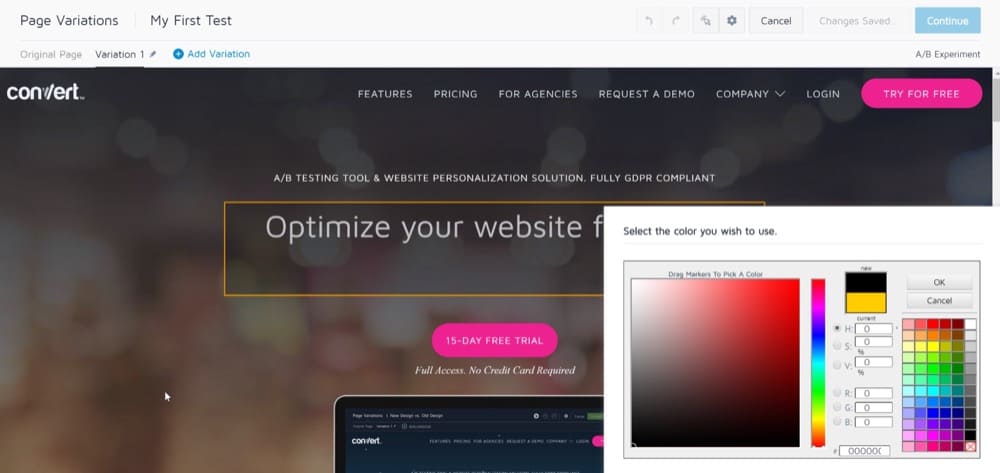
Step 2: Collect and Segment Your Data from the CDP
Using the CDP as your core center for gathering and storing customer data can aid with A/B testing in two ways: customer behavior tracking and audience segmentation.
To begin, use the CDP to set up event tracking to capture customer activity. You can do this using the “analytics.track” JavaScript code snippets that you embed on your website.
Segment and Rudderstack gather this information and arrange it into individual customer profiles, ensuring that it is accurate and free of duplication.
Finally, you’ll have a nice, tidy library of client profiles comprising everything you know about each customer’s activity.
Then, you may create audiences based on any data you’ve gathered from your CDP. For example, you might wish to perform an A/B test on users who have browsed one of your products for a certain price.
Step 3: Iterate, Execute and Evaluate
All that’s needed now is to set up and run the A/B test using your A/B testing platform.
Because these technologies are so diverse, we can give only a broad overview of the necessary steps:
- Create your Original and Variation using an A/B testing platform
- Input your CDP audience segments to determine the subjects of your A/B test
- Analyze the results and apply what you’ve learned to future A/B experiments.
Check Convert’s integrations with Segment or Rudderstack.
Web Form Builders
Web forms are often overlooked when it comes to conversion optimization. Most companies stick with older designs, usually based on concepts from at least five years ago – but the world has changed!
The modern web form is not just an input field surrounded by text; instead, it can be a real revenue booster. Brands that take the time to effectively A/B test them realize that some traditional assumptions about form design are incorrect.
Form Placement
The first thing you should consider is where the form is placed. Up until a few years ago, everything crucial was placed above the fold.
However, thanks to mobile’s insistence on scrolling, more users go below the fold in their searches for additional information (even on desktop).
Consider testing different options on your site to see which works best for you instead of blindly following antiquated best practices. Regardless of where you place your forms though, make sure the content surrounding them encourages users to fill them out.
Form Layout
Next, form layout, is an area where form design has advanced significantly in recent years.
After years of bad layouts, most people agree that single-column layouts are the way to go.
Of course, mobile has a role, but it’s also a matter of making forms easier to understand and more active.
To get the most out of your web forms, you’ll need to rely on your own data derived from A/B tests.
As a result, make sure you have a good A/B testing platform on your side that can integrate easily with your web forms. This will help you identify conversion bottlenecks that your users may be encountering.
Behavioral Analytics Tools
Conversions are a major source of frustration for most organizations nowadays. Why? Because they’re incredibly unpredictable, not to mention they are the most important factor impacting a company’s growth!
The volatility of conversions comes from the nature of humans and their unexpected conduct. So, the color of a CTA button or the addition of a single word to your landing page headline can actually have a significant impact on conversion rates.
If only there was a way to interpret and comprehend user behavior so that landing pages could be optimized, right?
Though we can’t entirely analyze and forecast user behavior, we can use user behavior analytics to guess at least some aspects and boost conversion rates.
You too can employ user behavior analytics to improve your conversion rates.
Here’s how to go about doing so:
Use Heatmaps for Your Landing Pages
Heatmaps are a type of data visualization that use a color-coded scheme to display user behavior.
Heatmaps allow you to visualize human behavior in great detail. The colors represent the number of times a certain portion of the webpage has been clicked.
Using heatmaps on your landing pages can help you better understand how your users interact with your site, allowing you to see where users are concentrating their efforts.
This can help you to obtain information on your landing page content, graphics and videos, and call-to-action button clicks, so you can identify these areas for development and apply them to boost conversion rates.
You can also use scrollmaps to figure out how long your landing page should be.
Using a scrollmap, you’ll be able to determine the best location for your sign-up form and CTA, in order to maximize conversions.
You may also use A/B testing to test multiple variations of the same element once you’ve discovered how your visitors engage with it on your landing page. This, too, will help you optimize your conversions!
Use Session Recordings for Your Landing Pages
Session recordings of your landing pages can also be used to study user activity in great detail.
You can search for details like mouse movement, user clicks, scrolling patterns, and the location of your landing page where the user spends the most time with each session recording.
Using session recordings, you can increase the performance of your website’s main metrics by optimizing the site navigation, site design, form design, and form flow.
You can perform tests to lower bounce rates, which will lead to higher conversion rates.
Using the information from session replays, you may experiment with changing the structure of your landing page, which can result in more conversions for your company.
Let’s say you see that a large number of your visitors are pausing at a specific spot on your home page.
This could be because users find this section more engaging and wish to read it all the way through.
As a result, you might want to consider putting this section above the fold to increase the effectiveness of your landing page.
You can then utilize A/B testing to see if the session recording-based observation is performing as planned.
Experience these features for free when you sign up for a demo!
Check Convert’s integrations with Hotjar, CrazyEgg, SessionCam, FullStory, Amplitude, ContentSquare, Smartlook and Mouseflow.
Analytics Tools
Companies that use A/B testing solutions are focused on improving their users’ digital experiences.
In order to truly understand how A/B testing and customization efforts are affecting your users’ digital experiences, an analyst must take a broad picture of how users engage with the site, app, or marketing materials on a test page.
You can utilize an analytics platform to construct precise user segments that can then be used to compare and evaluate the general usage of your site (rather than just the individual metrics targeted in your A/B test).
While the primary and secondary metrics targeted by your A/B test will form the foundation of any A/B testing analysis, it is critical to look beyond these metrics in order to understand user behavior and the digital experience as a whole.
How often, for example, have the users who converted in your test visited your site or made a previous purchase? What types of marketing materials do they interact with the most?
Is there a change in how consumers responded to the test (if their previous site behavior was different), such as viewing lots of products on the site in the three months prior to viewing the test?
These types of queries will be much easier to explore using a pure analytics tool (rather than an A/B testing tool), due to the scope of data they are able to record.
While A/B testing tools provide a user-friendly and robust reporting interface, analytics tools allow you to dig much deeper and do a whole lot more with your data.
In addition, many companies use their analytics metrics to report on-site/company performance in a broader sense.
Once test data is transmitted to your analytics platform, all reporting can be done from there, guaranteeing that test data and analytics data is always synced.
This makes it easier to share test findings across a large organization.
It’s also easier for a company’s various teams to accept test results if they can use the analytics tool they’re most familiar with, rather than one they’ve never used before.
As a result, we advise you to integrate! We always recommend combining your testing tool and analytics platform, regardless of which one you use, to fully understand the influence of your test on users’ digital experience.
See some integration examples between Convert and various analytics tools:
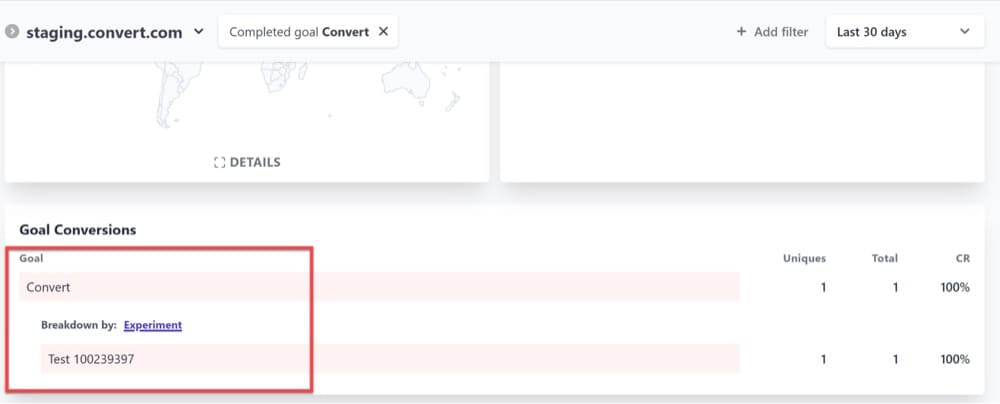
Check Convert’s integrations with Google Analytics, Adobe Analytics, Plausible, Matomo, Zuko, Heap, Kissmetrics, Mixpanel.
Business Intelligence (BI) Tools
We have entered a new era in analytics: one that requires a quick, frictionless information flow across organizations.
With COVID-19 affecting practically every industry, the necessity for strong data-driven decision-making has become evident.
Businesses rely on reports to make informed decisions. However, with rapidly changing data, KPIs, and measurements, it is critical that the entire organization trusts the data utilized in the reports and analytics used to make these decisions.
Many analysts are concerned about whether or not the information conveyed through reports is reliable. How will they be able to verify it? Who can they turn to for confirmation? What can they do to ensure the data is reliable?
This leads to greater difficulty and more time spent on decision-making.
Business analysts can utilize BI interfaces to identify and analyze their datasets. Same with A/B experience reports.
If you can integrate your A/B testing platform with a BI interface, you can assemble and organize your data, transforming it into understandable insights. (This is generally done using aesthetically appealing and simple-to-understand charts and graphs.)
This integration enables you to create and share clear and actionable snapshots of what’s going on in your company.
A general integration flow in Convert looks like this: Microsoft Power BI is integrated with Convert, allowing Convert data to be imported into your central data warehouse (e.g. Panoply) with an ETL tool (e.g. Stitch).
From there, it’s easy to use Power BI to perform the in-depth analysis you need.
Check Convert’s integrations with Microsoft Power BI.
Offline Conversion Tools
Customers switch back and forth between online and offline channels throughout their customer journey, creating an increasingly complex omnichannel world.
This means tests must be implemented across all channels, so that customers see the same variant and have the same experience no matter how they reach you.
The customer experience should be consistent whether they phone your call center, find you through an ad, or access your website via desktop or IOS/Android mobile app.
You must also be able to assess the impact of experiments across downstream and offline channels, as well as how they influence metrics like Net Promoter Score (NPS).
That implies you’ll need an API to connect to offline solutions and connections with call tracking technologies on your platform.
Call tracking can be combined with A/B testing in Convert.
The first step of getting this to work is setting up a new goal called Call Tracking.
You can use any of the existing goal templates, but we recommend using a Javascript Triggered goal, so it can be triggered using Javascript and external systems like Call Tracking.
Check Convert’s integrations with Call Tracking tools.
Conclusion
There are a plethora of tools available that can be integrated with your A/B testing tool in an almost limitless number of ways. We hope the integrations discussed in this article will help you to make an informed decision for your business.
You can experience seamless integrations firsthand, by signing up for a free trial with Convert today. And if there are any other integrations we missed, that you just can’t live without, feel free to reach out and let us know! We’d love to hear from you.
Written By
Dionysia Kontotasiou

Edited By
Carmen Apostu

